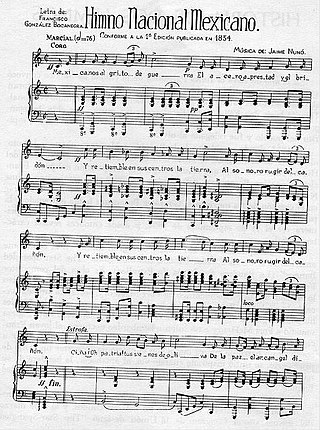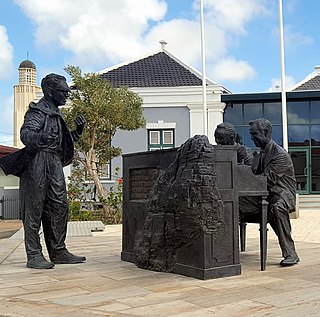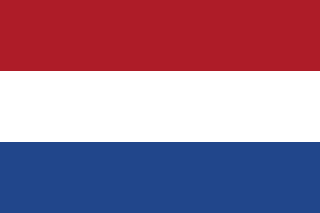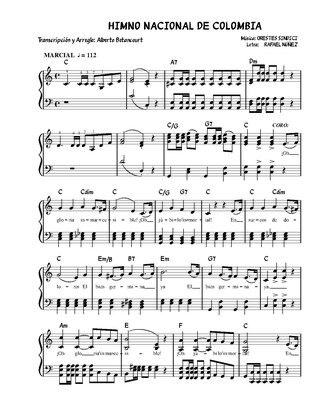Related Research Articles

The "National Anthem of Chile", also known as "Canción Nacional" or by its incipit "Puro, Chile, es tu cielo azulado", was adopted in 1828. It has a history of two lyrics and two melodies that made up three different versions. The current version was composed by Ramón Carnicer, with words by Eusebio Lillo, and has six parts plus the chorus.

The "Mexican National Anthem", also known by its incipit "Mexicans, at the cry of war", is the national anthem of Mexico. The anthem was first used in 1854. The lyrics of the national anthem, which allude to historical Mexican military victories in the heat of battle and including cries of defending the homeland, were composed by poet Francisco González Bocanegra after a Federal contest in 1853. Later, in 1854, he asked Jaime Nunó to compose the music that now accompanies González's poem. The national anthem, consisting of ten stanzas and a chorus, effectively entered into use on September 16, 1854.

"La Borinqueña" is the official anthem of Puerto Rico.

The "Argentine National Anthem" is the national anthem of Argentina. Its lyrics were written by the Buenos Aires-born politician Vicente López y Planes and the music was composed by the Spanish musician Blas Parera. The work was adopted as the sole official song on 11 May 1813, three years after the May Revolution; 11 May is therefore now Anthem Day in Argentina.

"Aruba Dushi Tera" is the national anthem of Aruba. It is a waltz written by Juan Chabaya Lampe and composed by Rufo Wever. The last verse was written by Hubert (Lio) Booi. It was accepted as the Aruban national anthem on 18 March 1976. It is written in Papiamento.

The Marcha Real is the national anthem of Spain. It is one of only four national anthems in the world – along with those of Bosnia and Herzegovina, San Marino and Kosovo – that have no official lyrics. Although many different lyrics have been made for it in the past, it has never had official lyrics as a national anthem.
The "National Anthem of Honduras" was adopted by presidential decree 42 in 1915. The lyrics were written by Augusto Constantino Coello and the music composed by Carlos Hartling.
Papiamento or Papiamentu is a Portuguese-based creole language spoken in the Dutch Caribbean. It is the most widely spoken language on the Caribbean ABC islands, with official status in Aruba and Curaçao. Papiamento is also a recognised language in the Dutch public bodies of Sint-Eustatius and Saba.

The "Himno Nacional del Perú" is the national anthem of Peru. It was composed by José Bernardo Alcedo, and its lyrics were written by José de la Torre Ugarte in 1821.
An anthem without a title was the untitled anthem of the Netherlands Antilles. It was written in English by Zahira Hiliman from Sint Maarten and translated into the Papiamento language by Lucille Berry-Haseth from Curaçao. The anthem was written in two of the three official languages of the Netherlands Antilles, English and Papiamento. It was adopted in 2000. In addition to this one, many of the islands in the Netherlands Antilles had their own regional anthems.

The national flag of Curaçao represents the country of Curaçao as well as the island area within the Netherlands Antilles from 1984 until its dissolution in 2010.

"La bandera blanca y verde" is the official anthem of Andalusia, an autonomous community of Spain, adopted under the first Andalusian Statute of Autonomy. The lyrics were written by Blas Infante. The music for the anthem of Andalusia was composed by the former director of the municipal band of Sevilla, José del Castillo Díaz. The origins of the music are vaguely inspired on the Santo Dios, a religious cantic widely spread in rural Andalusia, usually sung by peasants while reaping their crops. It is believed that Blas Infante suggested the music to José del Castillo. The melody of the anthem is Castillo's original though. After the Spanish Civil War, the original music scores were destroyed, and only a manuscript for piano is conserved. The composer Manuel Castillo improved José del Castillo's version.

"Tera di Solo y suave biento", also known as the "Himno di Boneiru" and originally the "Himno Boneriano", is the anthem of Bonaire, a special municipality of the Netherlands in the Caribbean. The music was composed by J.B.A. (Tony) Palm, and the official lyrics, which are in Papiamentu, were written by Hubert (Lio) Booi (1919–2014). From 1964 to 2000, it also served as the anthem of the Netherlands Antilles.
Papiamento has two standardised orthographies, one used on the island of Aruba and the other on the islands of Curaçao and Bonaire. The Aruban orthography is more etymological in nature, while the other is more phonemic. Among the differences between the two standards, one obvious difference is the way the name of the language is written. In Aruba it is written Papiamento, while in Curaçao and Bonaire it is written Papiamentu. The governments of Curaçao and Aruba formally standardised orthographic rules in 1976 and 1977, respectively.

The Colony of Curaçao and Dependencies was a Dutch colony in the Caribbean Sea from 1634 until 1828 and from 1845 until 1954. Between 1936 and 1948, the area was officially known as the Territory of Curaçao, and after 1948 as the Netherlands Antilles. With the proclamation of the Charter for the Kingdom of the Netherlands on 15 December 1954, the Netherlands Antilles attained equal status with the Netherlands proper and Suriname in the new Kingdom of the Netherlands.

The emblem of Curaçao is a yet to be adopted national symbol of Curaçao. The design will be based on a concept by Adresetti Monart featuring the Queen Emma Bridge, a cactus, a hummingbird and a traditional fishing boat, which was chosen through a design competition held in 2022. The emblem is set to replace the coat of arms of Curaçao, which has been in use since 24 July 1964.

The "National Anthem of the Republic of Colombia" is the official name of the national anthem of Colombia. It was originally written as a poem in 1850 by future President Rafael Núñez as an ode to celebrate the independence of Cartagena. The music was composed by Italian-born opera musician Oreste Síndici, at the request of Bogotan actor José Domingo Torres, during the presidency of Núñez, and with lyrics refined by Núñez himself, it was presented to the public for the first time on 11 November 1887. The song became very popular and was quickly adopted, albeit spontaneously, as the national anthem of Colombia.

The 1969 Curaçao uprising was a series of riots on the Caribbean island of Curaçao, then part of the Netherlands Antilles, a semi-independent country in the Kingdom of the Netherlands. The uprising took place mainly on May 30, but continued into the night of May 31 – June 1, 1969. The riots arose from a strike by workers in the oil industry. A protest rally during the strike turned violent, leading to widespread looting and destruction of buildings and vehicles in the central business district of Curaçao's capital, Willemstad.

Joceline Clemencia was an Afro-Curaçaoan writer, linguist, feminist and independence activist. She advocated for the Creole language spoken in Curaçao, Papiamento, to become an official language and was successful in the struggle, having created both language schools and texts to further its cultural significance. She was in favor of full independence of Curaçao from the Netherlands.

The Curaçao Museum is an art and cultural history museum in Curaçao. The museum opened on 7 March 1948, and is the oldest museum in Curaçao which still exists. The museum is located in the former military hospital.
References
- 1 2 3 4 5 6 "Buki di Bandera, Eskudo i Himno di Kòrsou" [Book of the Flag, Coat of Arms and Anthem of Curaçao](PDF). www.curacao-gov.an (in Papiamento). June 2004. Archived from the original (PDF) on 2012-03-10. Retrieved 2022-01-13.
- ↑ Agency, Central Intelligence (2015-11-24). The CIA World Factbook 2016. Simon and Schuster. p. 1369. ISBN 978-1-5107-0089-5.